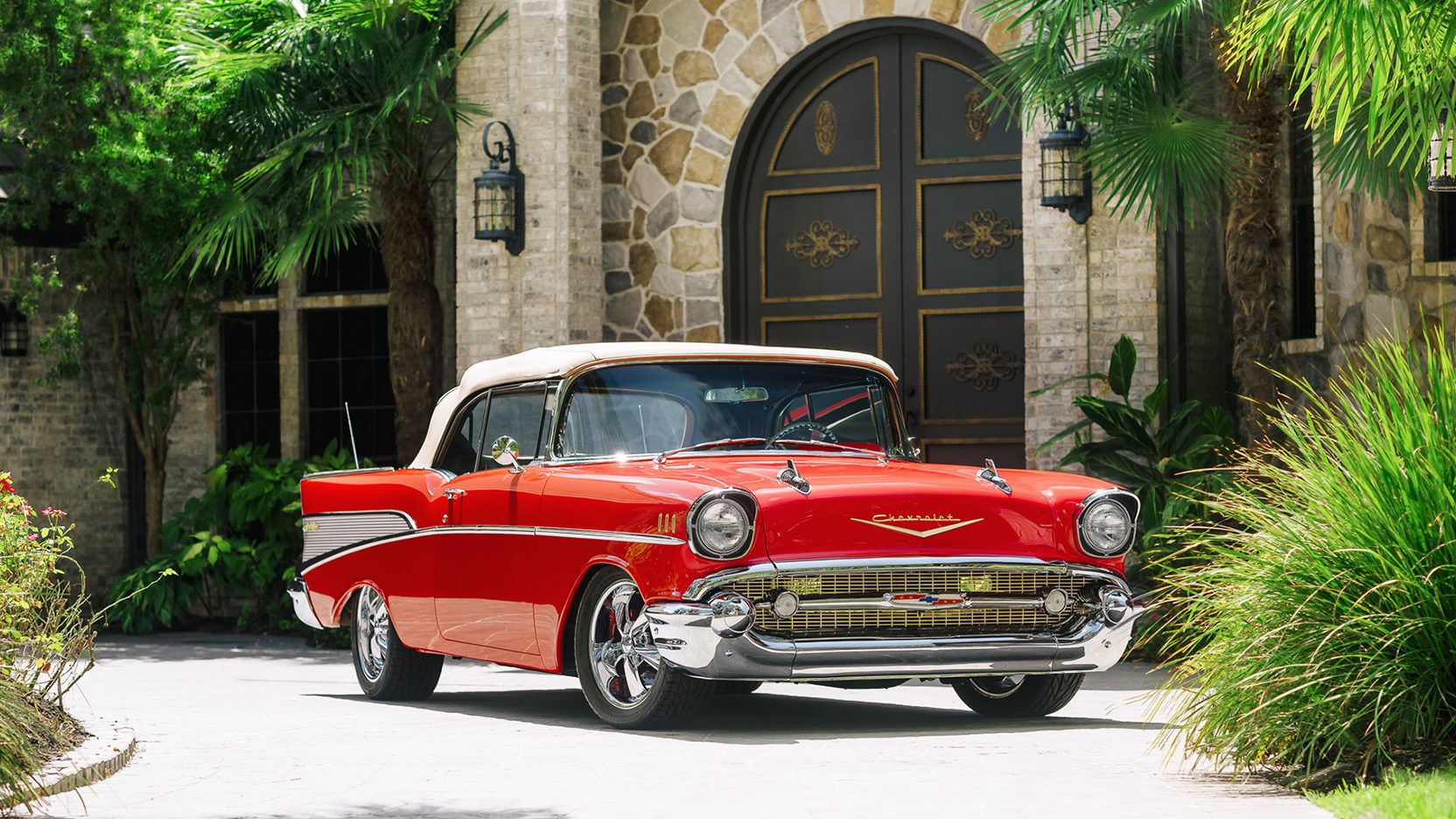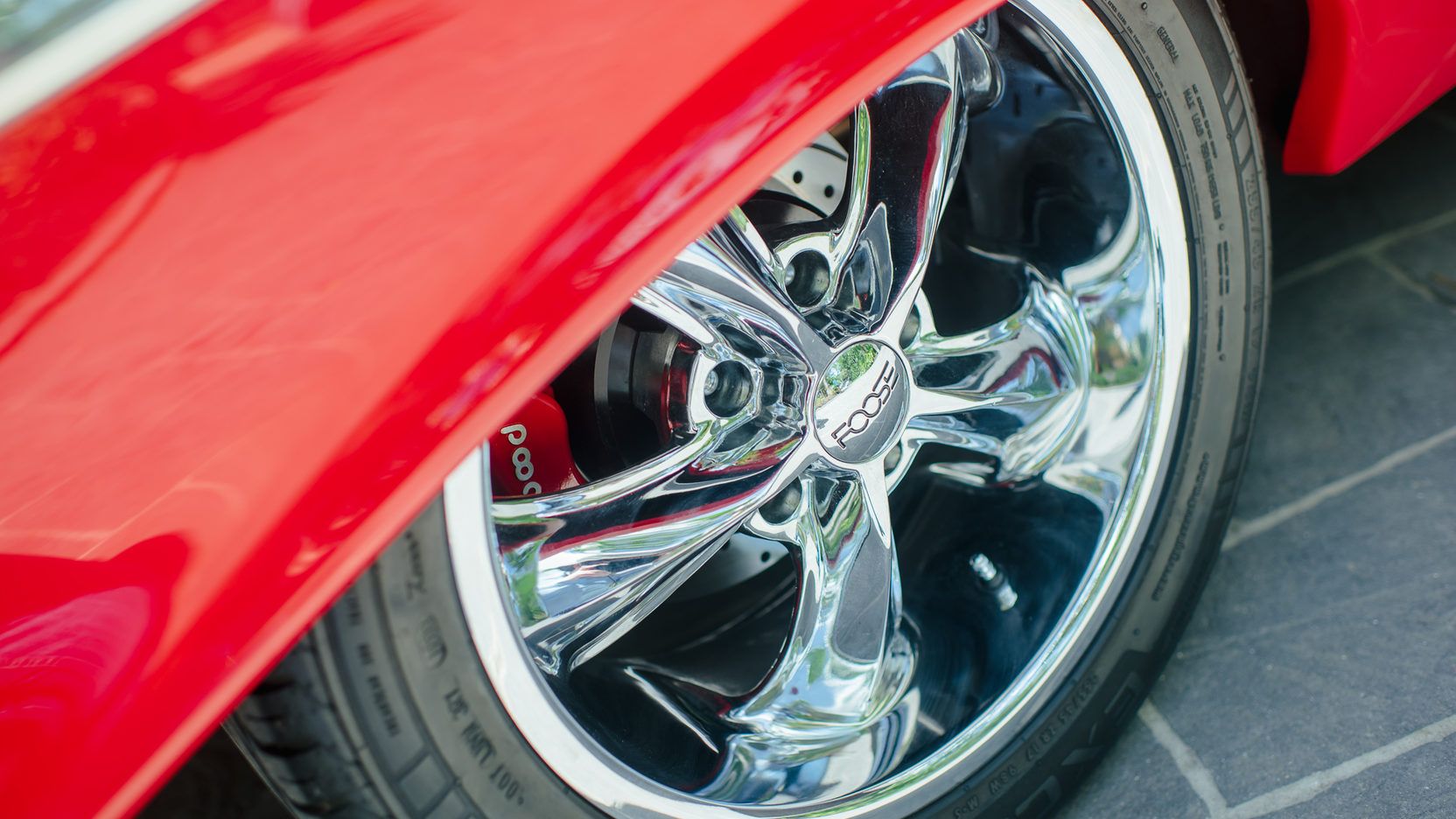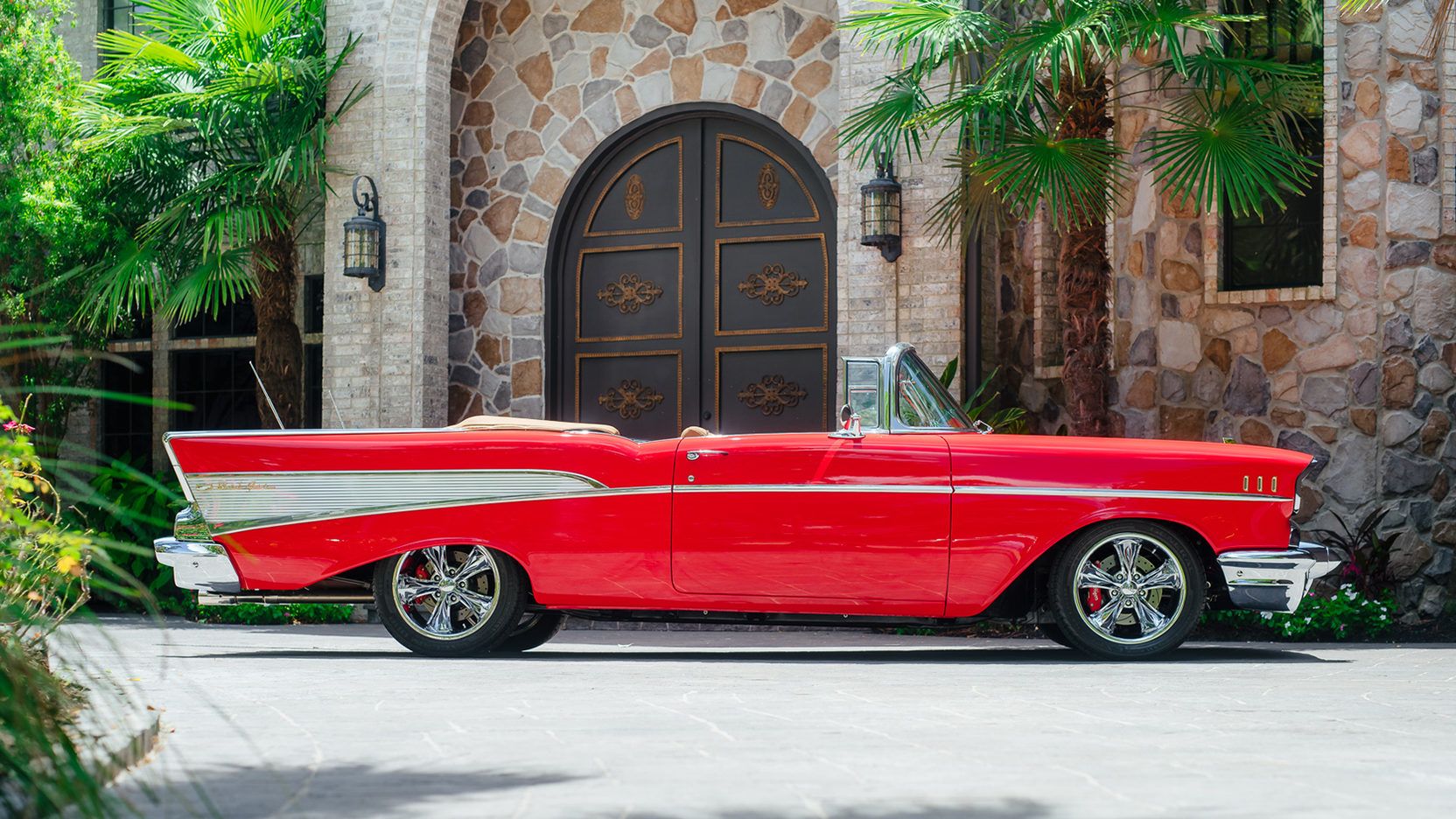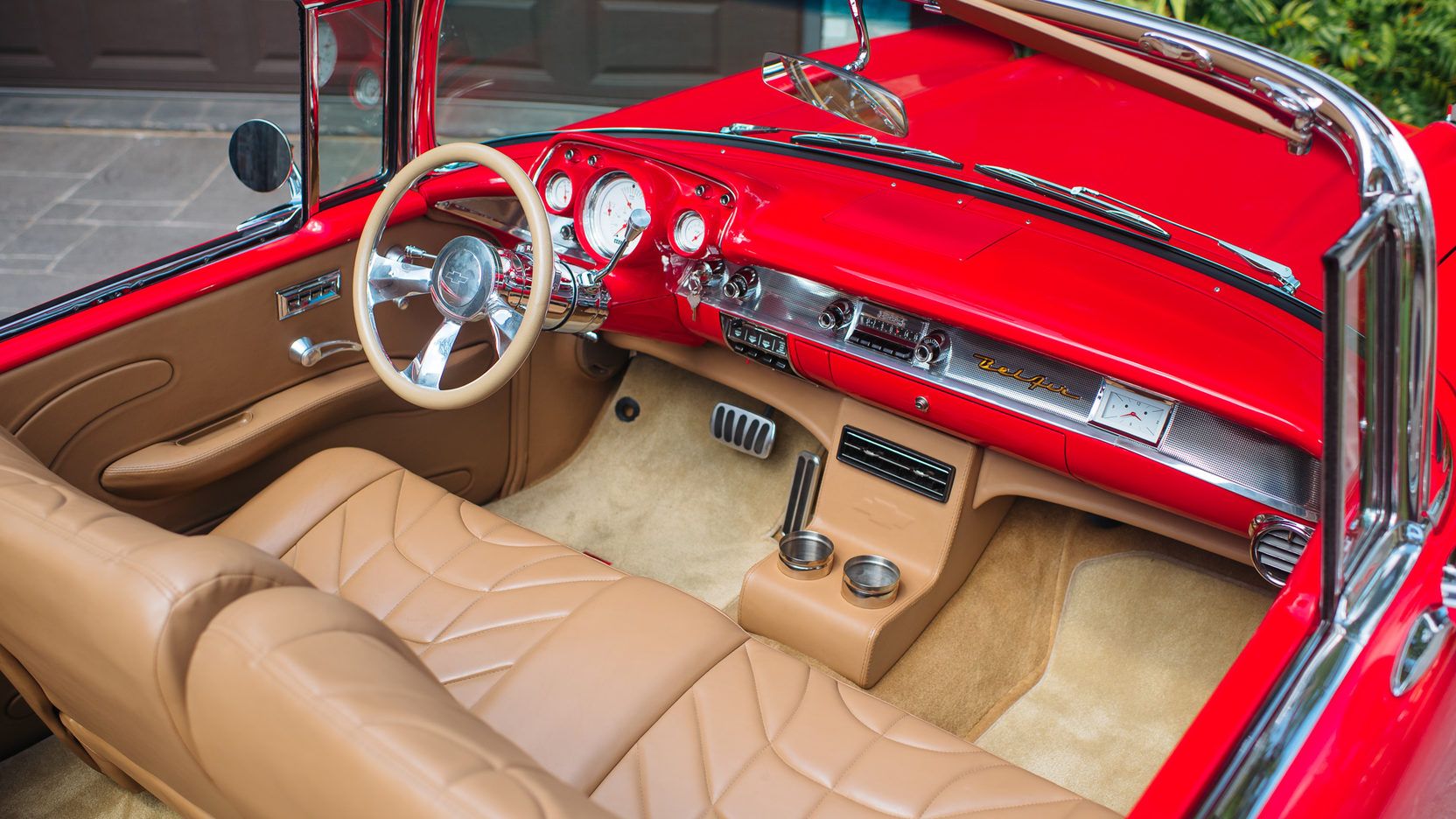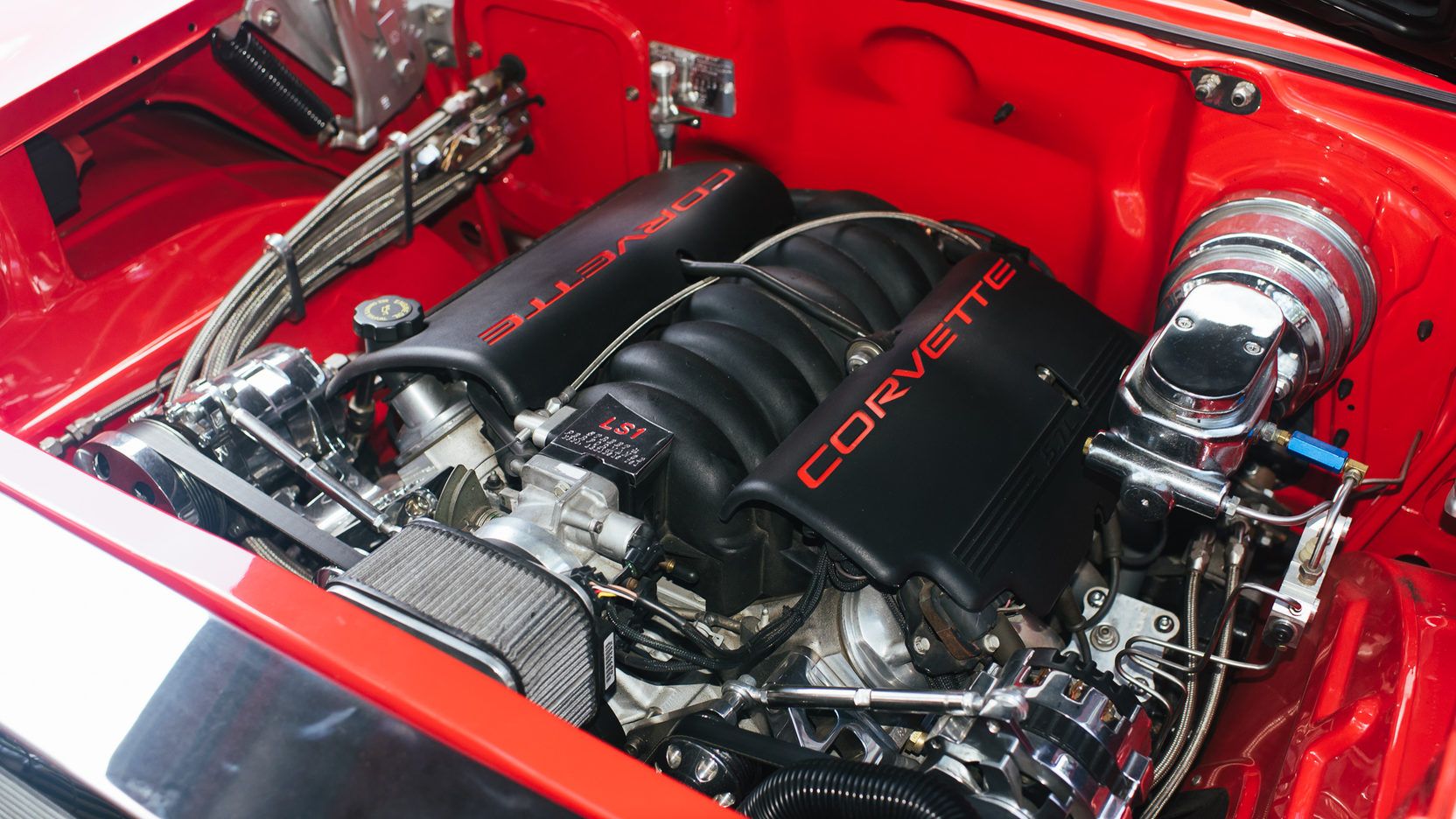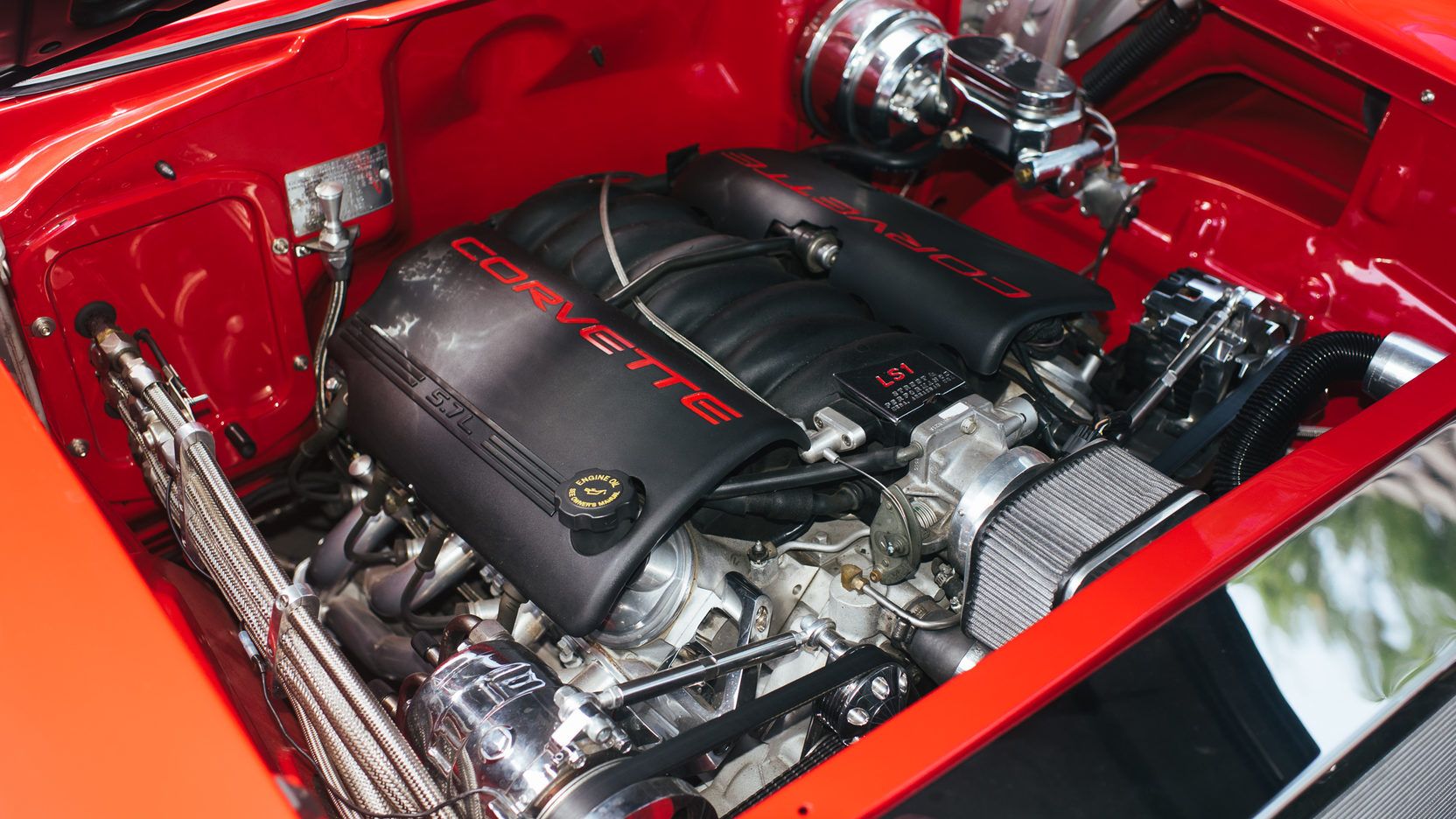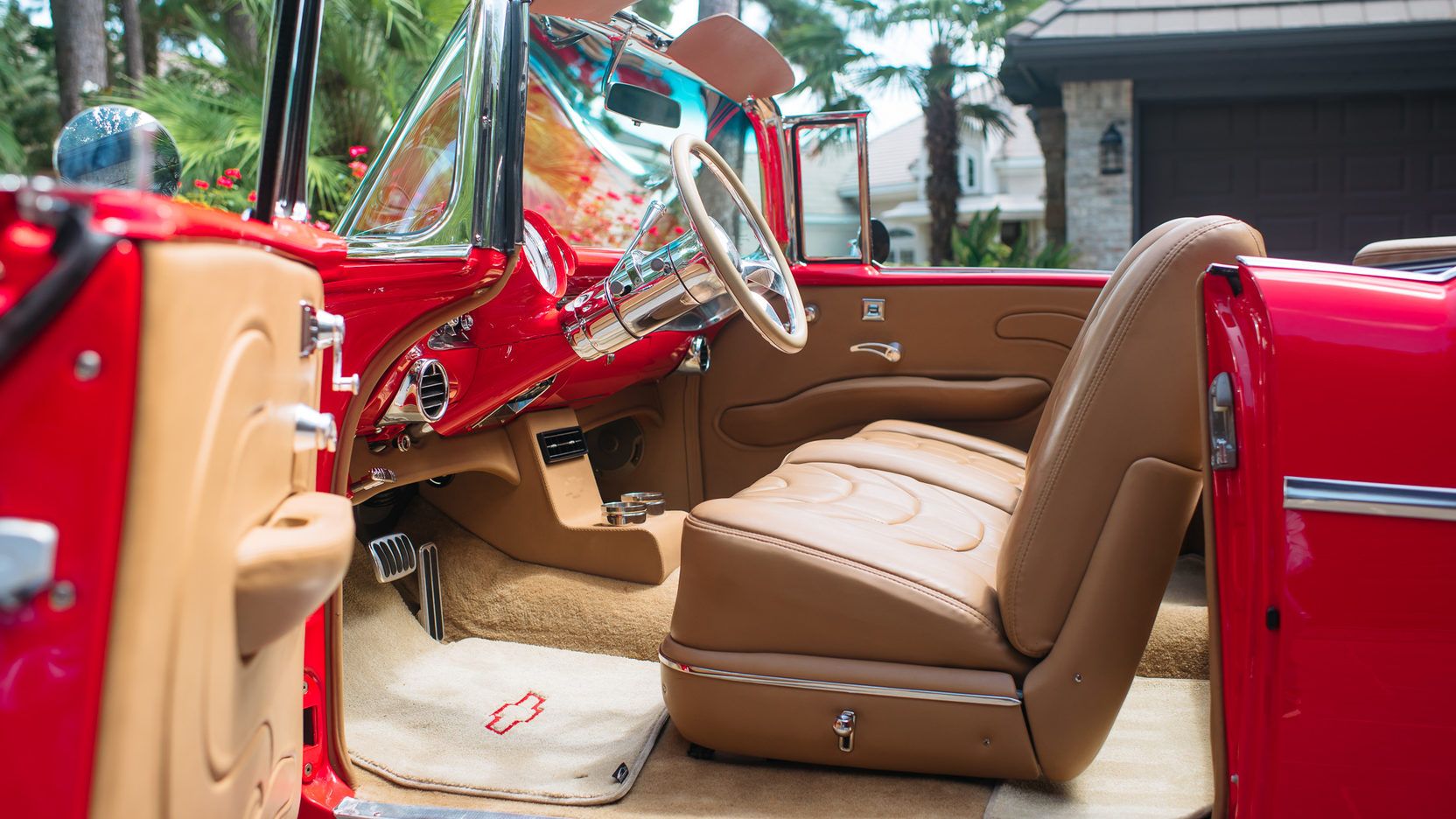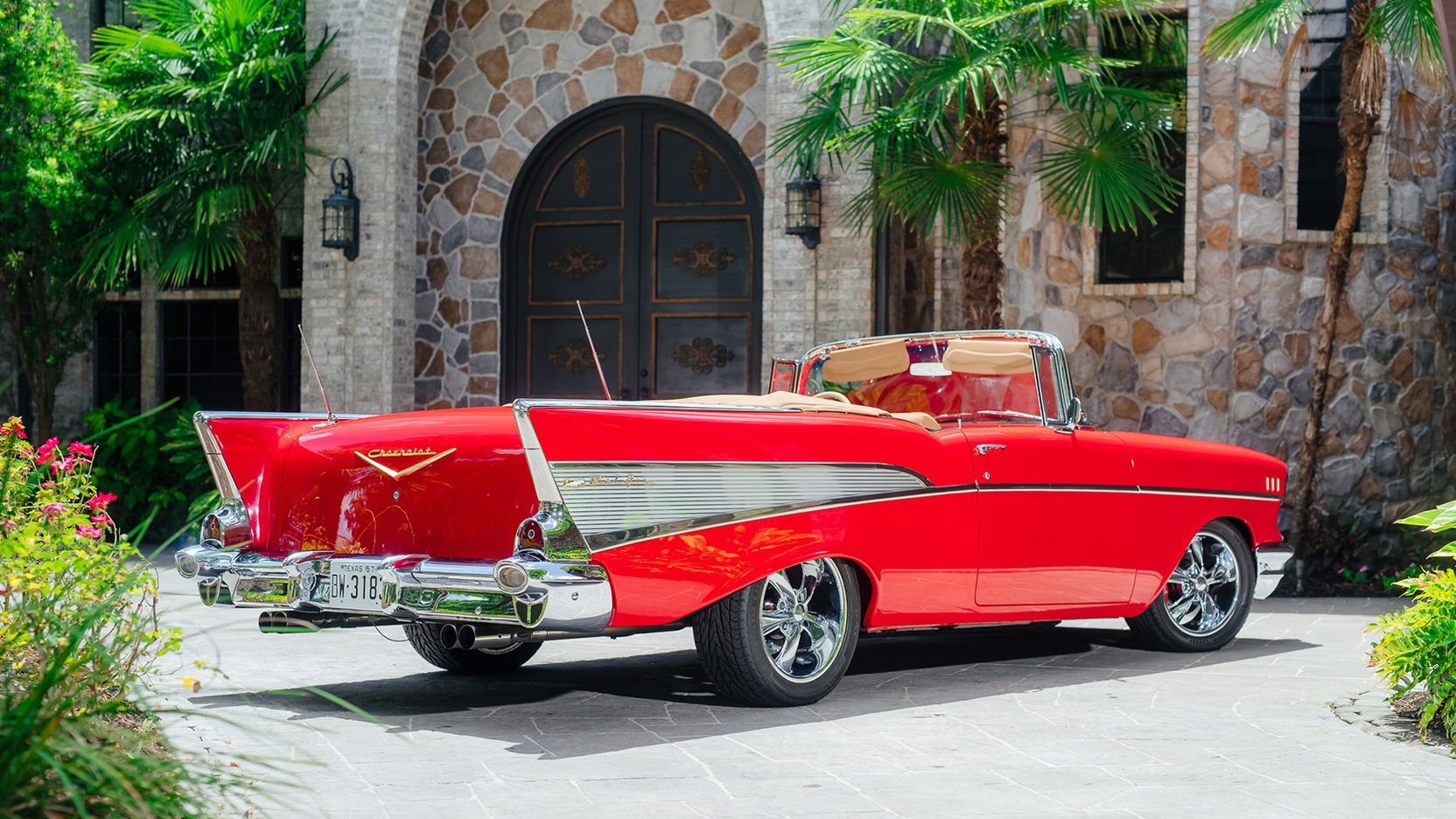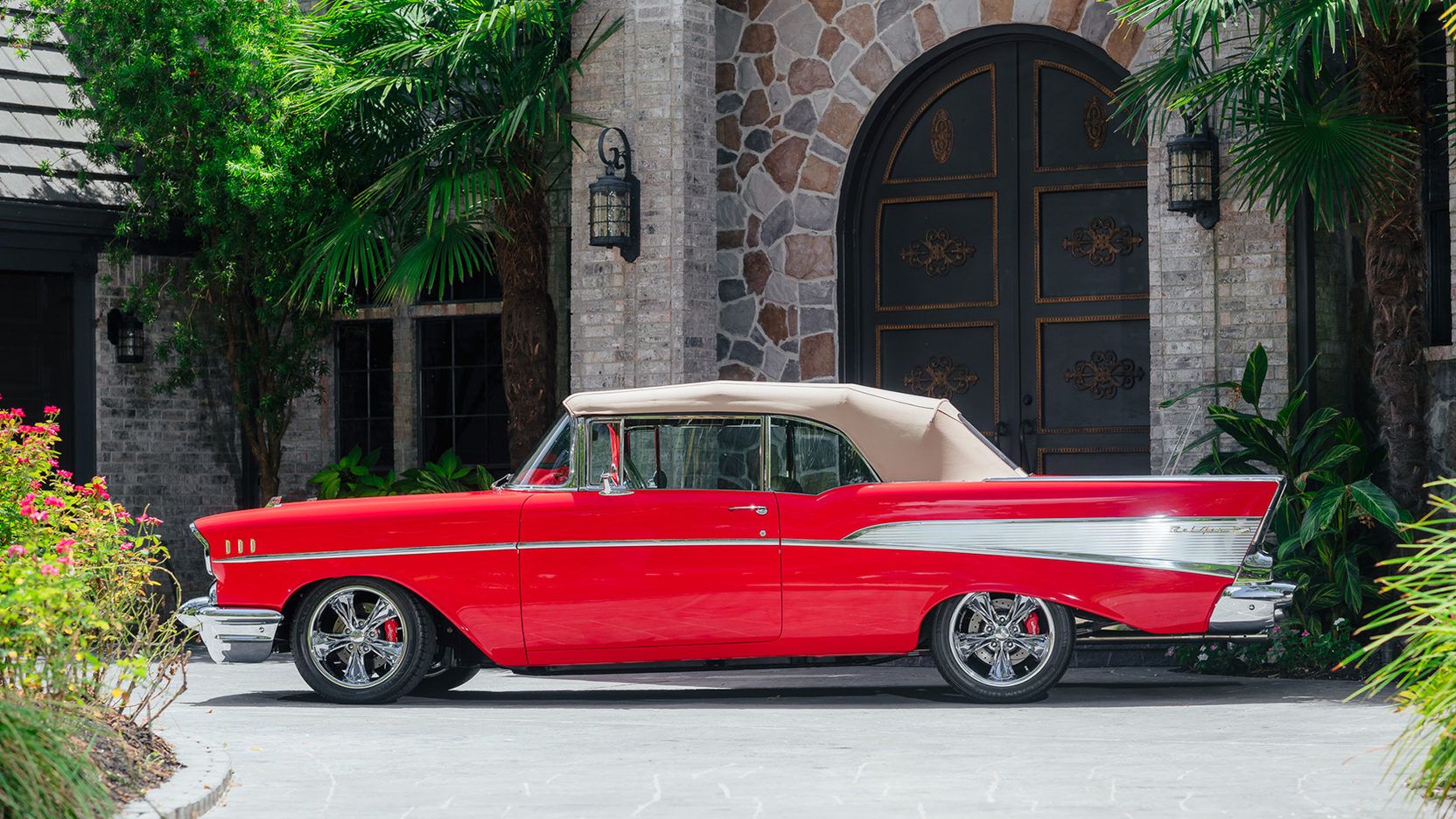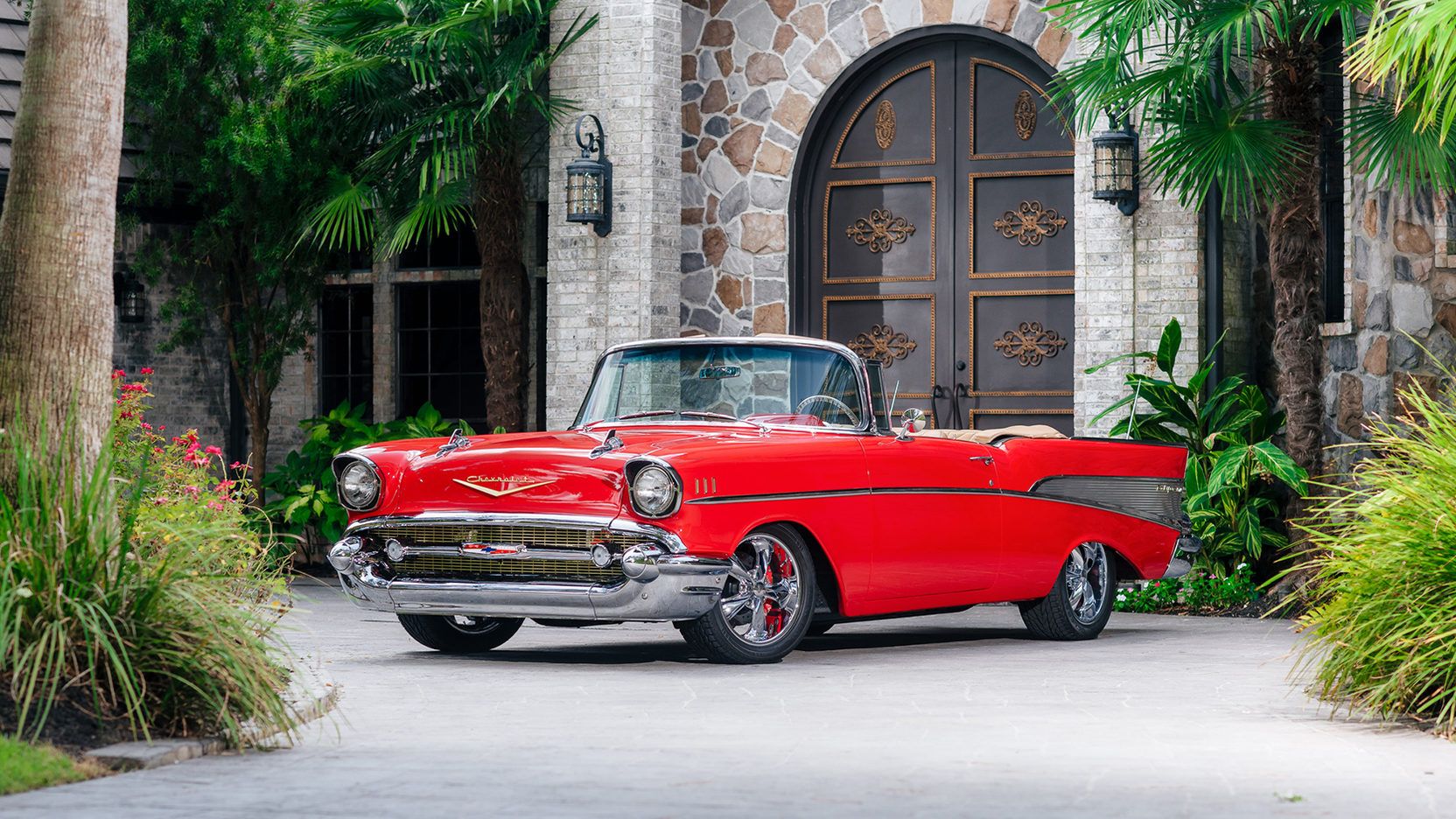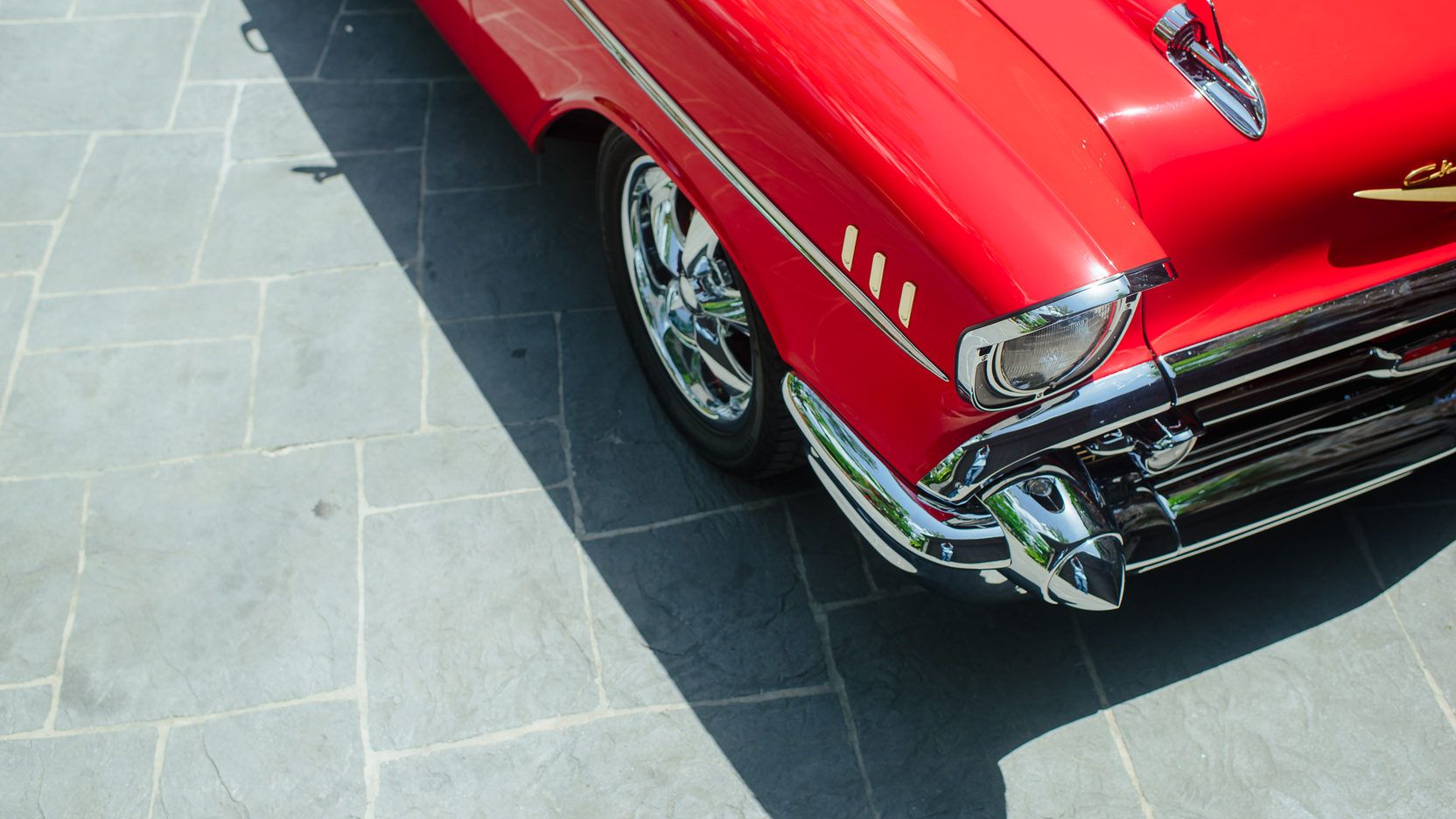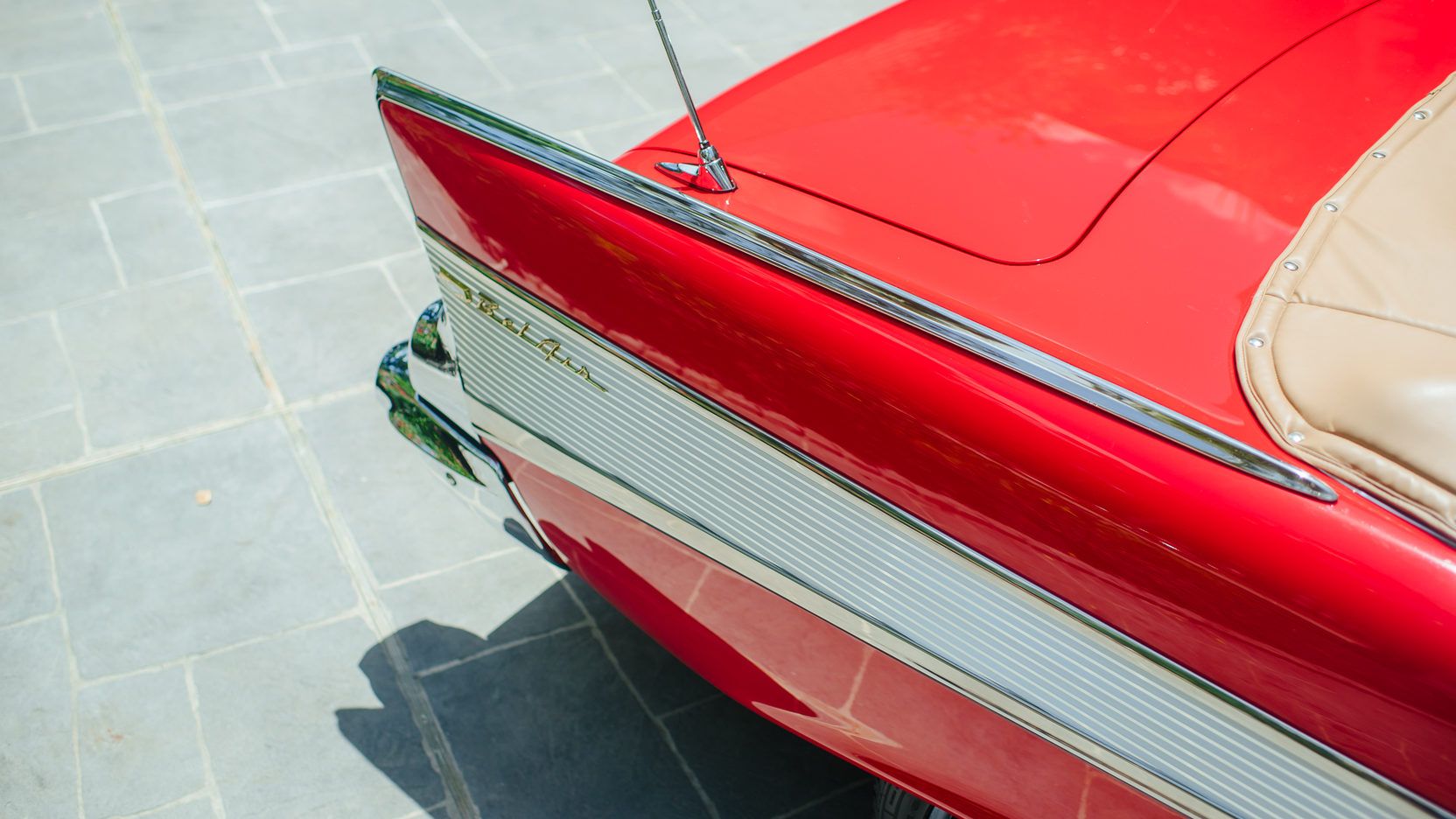The Chevy Bel Air was pretty much an instant classic when it hit showrooms back in 1950. The first generation, which ran between 1950 and 1954) sported a revolutionary design, with hardtop models designed as a convertible with a non-removable hard top. It was a design that had been around since the early 1920s, but up until the Bel Air, as well as other models from Chevy and Cadillac, the design hadn’t really seen too much success. The model we’re here to talk about today is a 1957 Bel Air convertible that will be going under the hammer in August of 2016 at the Mecum auction during Monterey Car Week.
This specific model isn’t exactly your everyday ’57 Chevy, though. This thing has gone through restoration, is completely rust free, and has been upgraded with a 5.7-liter Corvette-derived LS1 that is backed by the near bullet-proof 4L60-E four-speed automatic (the modern version of the 700R4 transmission.) Outside of this, there are lots of other goodies and features that make this Bel Air convertible a true one-of-a-kind model. So, let’s get on with my review before I make this introduction just way too long.
Continue reading to learn more about the 1957 Chevrolet Bel Air Convertible.
1957 Chevrolet Bel Air Convertible
- Make: Array
- Model: 1957 Chevrolet Bel Air Convertible
- [do not use] Vehicle Model: Array
Exterior
As you can see from the images here, the exterior has been left completely stock, save for the Porsche red finish. Outside of this, the traditional styling of the second-gen Bel Air featured heavy doses of chrome. Up front, the car featured two sealed-beam halogen headlamps that were encased in chrome surrounds. You can’t miss the classic “Chevrolet” symbol on the hood, which also featured that strange “V” below it. The front fascia was completely covered in chrome and featured a single chrome louver inside the wide radiator grille that house two more exterior lights. The grille on this model features a rectangular mesh that is painted in an odd shade of yellow.
The sides are predominately defined by the large chrome strip that runs from the headlights all the way back to the rear quarters where it opens up to large chrome wings. While this design is a bit gaudy by today’s standards, it was a well-desired design back in the late 1950s. Outside of these chrome body markers, the body itself was relatively free of body lines or creases, leaving most of the exterior as smooth as a newborns bottom. It should also be noted that the bel air featured chrome mirrors and door handles, and those rear quarters really were elevated just a little bit over the front end. This specific model is riding a pair of beautiful 17-inch Foose Nitrous wheels.
This wouldn’t be a Bel Air if the rear weren't encompassed in a ton of chrome, so there’s plenty of that going on in the rear too. While the rear end is extremely unconventional by today’s taste of style, there is just something about the Bel Air that screams “sexy.” That long trunk lid folds over in the rear and travels all the way down to the rear bumper. If you’ve ever had to remove one of these trunk lids, you know that the Bel Air was essentially a civilian tank, because that trunk lid weighs what seems like a million pounds. Of course, it wouldn’t be a ’57 Chevy without the classic “Chevrolet” and “V” logo on the deck lid. The chrome trim from the tops of the rear quarters fold over onto the rear and eventually lead to the taillights that are recessed in chrome but protrude from the rear of the body. The rear bumper is, as you probably guessed, all chrome and featured integrated reverse lights. Below the rear bumper you’ll find twin dual exhaust outlets that are also finished in chrome.
All told, the Bel Air is one of those classics that we Americans always enjoy seeing. It had a beautiful and sleek design, despite being so massive. It wasn’t exactly aerodynamic with its nearly vertical but slightly curved windscreen, but that didn’t matter because this baby was all about style. To put it simply, they don’t make them like this anymore.
Interior
This specific model features a custom Tan interior. The leather on the bench seats and door panels are held together ever so elegantly by custom stitching. On this model, the three-spoke steering while is billet aluminum and wrapped in tan leather. There are chrome window switch surrounds for the power window switches, and a polished aluminum face plate on that wide, body-colored dashboard. Three gauges make up the “instrument cluster” ahead of the steering wheel, and as you can see an original-style radio still sits in the center stack. It’s nice to see actually, as a lot of these older models have been molested by the installation of newer, aftermarket radios despite the availability of modern replicas that offer advanced features.
The center console and lower dash kick plates are also wrapped in tan leather, and if you look close enough, you can see the Chevy bowtie sticking out just below the center vent. Speaking of vents, this baby is equipped with Vintage air, which is generally a welcomed add-on for cars of this age and caliber. The images we have here don’t give any good view of the rear seats but, believe it or not, there was actually quite a bit of room back there despite that rear convertible top. All told the interior is the perfect mix of original style and street rod luxury all combined into one beautiful package. Someone will certainly find themselves with a nice, comfortable ride when they take ownership of this beauty.
Drivetrain
The second-gen Bel Air was offered with a number of engines, including a 3.5-liter inline-six, a 3.9-liter “Blue Flame” inline-six, a 265 cubic-inch 4.3-liter V-8, and in 1957 a 283 cubic-inch, 4.6-liter, V-8. Transmission options included a three-speed manual, a two-speed Powerglide automatic, and a three-speed Turboglide automatic. None of this really matters, though, as this baby has gone through a major heart transplant to give it a little extra oomph. See, this beast is powered by a 5.7-liter, LS1, Corvette engine that is said to deliver 350 horsepower and 365 pound-feet of torque. Power is sent to the rear wheels via an electronically controlled 4L60-E four-speed automatic transmission, which is the electronic version of the 700R4 tranny that some of us gearheads still love to this day.
The engine itself sports the Corvette and LS1 engine cover to let the world know exactly what it is, and it features chrome components like the alternator, water pump, crank pulley, and A/C compressor. Exhaust gasses are routed from the cylinder heads after combustion to the rear through true dual pipes with chrome tips. The engine is also equipped with a Concept One power steering system, which makes this thing an absolute dream to drive over a model with mechanical steering. All that extra power from the LS1 doesn’t go unchecked for long, as stopping duties are handled by a Wilwood brake system with vented discs on each corner and red-painted calipers.
Pricing
As far as pricing goes, the 1957 Bel Air Convertible carried a factory price of $2,511 when equipped with the V-6 and $2,611 when equipped with a V-8 engine. That might not seem like much for this beauty of a road-going tank, but in today’s terms that little bit of money is the equivalent of $21,539 and $22,397, respectively. The computations are the courtesy of usinflationcalculator.com, which claims the cumulative rate of inflation between 1957 and 2016 to be 757.8 percent. Yikes!
This specific model is slated to go under the hammer in August of 2016 at Mecum’s auction during Monterey Car Week and is expected to go for anywhere between $160,000 and $180,000. Of course, that is just a rough estimate and with the right enthusiastic buyers in the crowd, it could certainly go for more. Stay tuned, as I’ll be sure to update this section once the auction is over – assuming it goes home with a new owner, that is.
Competition
1957 Ford Fairlane Convertible
The Ford Fairlane entered its second generation for the 1957 model year, and with it came a new design that was long and wider. It sat a little lower than the outgoing model and was sleeker thanks to lower-sitting tailfins in the rear. Engines for 1957 were carried over from the first-gen model, which gave the option of a 3.7-liter straight-six, or a 272 cubic-inch 4.5-liter V-8. There was also an optional, 292 cubic-inch 4.8-liter “Y-block” that was known as the Thunderbird V-8. As you can see, the overall look of the Fairlane was pretty comparable to the Bel Air Convertible, all the way down to the chrome bumpers and circular exterior light units. There was something else special about the ’57 Fairlane, however. The overall styling and design of the 1957 model were so well received that Ford actually managed to outsell Chevy for the first time in more than 20 years.
Conclusion
It’s always nice to stumble across an awesome example of mid-1950s Chevy engineering. Cars were built like tanks back then featuring body-on-frame designs and bodies that were made out of metal. Of course, for some odd reason, this didn’t necessarily make them safer, but there really wasn’t much these tanks couldn’t go through.
Nowadays, you’ll commonly find models like this in excellent restored condition heading to auction or stashed away (sadly) in someone’s garage collection. Non-convertible models are occasionally found on the drag strip with wheelie bars and tons of horsepower, but the ones you really want to see are the ones that get taken out for the occasional drive around town. It’s one thing to find them on the internet, but when you stumble across one at your local gas station or supermarket, it almost immediately leads to the snapping of pictures, a brief conversation with the owner, and – for those old enough to have driven one way back when – a day’s worth of reminiscing over their younger years of bulky V-8 power and lust.

